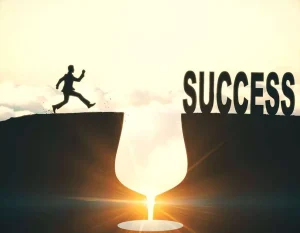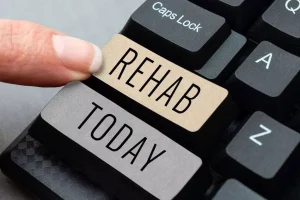
(b) Restrained eaters whose diets were broken by a milkshake preload showed increased activity in the nucleus accumbens (NAcc) compared to restrained eaters who did not consume the preload and satiated non-dieters 64. Rather than labeling oneself as a failure, weak, or a loser, recognizing the effort and progress made before the lapse can provide a more balanced perspective. For Jim and Taylor, this might involve acknowledging the months of sobriety and healthier lifestyle choices and understanding that a single incident does not erase that progress. Another example is Taylor, who has been doing a wonderful job taking walks and engaging in healthier eating. Taylor uses an app to watch her intake of calorie limit and does see positive outcomes to her new lifestyle. One night, she craves pizza and wings, orders out, and goes over her calories for the day.
Is a Relapse Dangerous?
Although reducing practical barriers to treatment is essential, evidence suggests that these barriers do not fully account for low rates of treatment utilization. Instead, the literature indicates that most people with SUD do not want or need – or are not ready for – what the current treatment system is offering. In other words, abstinence violation effects make a single lapse much more likely to turn into a full return to a full relapse into negative behavioral or mental health symptoms. In the context of addiction, a breach of sobriety with a single drink or use of a drug has a high likelihood of abstinence violation effect a full relapse.

A Lapse Vs. A Relapse
It is essential to understand what individuals with SUD are rejecting when they say they do not need treatment. In this model, treatment success is defined as achieving and sustaining total abstinence from alcohol and drugs, and readiness for treatment is conflated with commitment to abstinence (e.g., Harrell, Trenz, Scherer, Martins, & Latimer, 2013). Additionally, the system is punitive to those who do not achieve abstinence, as exemplified by the widespread practice of involuntary treatment discharge for those who return to use (White, Scott, Dennis, & Boyle, 2005). Given the abstinence focus of many SUD treatment centers, studies may need to recruit using community outreach, which https://ecosoberhouse.com/article/what-is-alcoholics-anonymous/ can yield fewer participants compared to recruiting from treatment (Jaffee et al., 2009).
- Taylor uses an app to watch her intake of calorie limit and does see positive outcomes to her new lifestyle.
- To date, however, there has been little empirical research directly testing this hypothesis.
- We identify a clear gap in research examining nonabstinence psychosocial treatment for drug use disorders and suggest that increased research attention on these interventions represents the logical next step for the field.
- While multiple harm reduction-focused treatments for AUD have strong empirical support, there is very little research testing models of nonabstinence treatment for drug use.
- One of the key features of the AVE is its potential to trigger a downward spiral of further relapse and continued substance use.
- The abstinence violation effect (AVE) describes the tendency of people recovering from addiction to spiral out of control when they experience even a minor relapse.
- (a) When restrained eaters’ diets were broken by consumption of a high-calorie milkshake preload, they subsequently show disinhibited eating (e.g. increased grams of ice-cream consumed) compared to control subjects and restrained eaters who did not drink the milkshake (figure based on data from 30).
Learn From Relapse
Addressing the AVE in the context of addiction treatment involves helping people develop healthier coping strategies and challenging negative beliefs that contribute to addiction. The AVE describes the negative emotional response that often accompanies a failure to maintain abstinence from drugs or alcohol. Jim is a recovering alcoholic who successfully abstained from drinking for several months. One day, when he was faced with a stressful situation, he felt overwhelmed, gave in to the urge, and had a drink. I have lost all that time,” which can trigger a self-destructive mindset and potentially lead to further relapse. Clinicians in relapse prevention programs and the field of clinical psychology as a whole point out that relapse occurs only after a long-term pattern of specific feelings, thoughts, and behavior.
Overcoming the Abstinence Violation Effect:
This model both accelerated the spread of AA and NA and helped establish the abstinence-focused 12-Step program at the core of mainstream addiction treatment. By 1989, treatment center referrals accounted for 40% of new AA memberships (Mäkelä et al., 1996). This standard persisted in SUD treatment even as strong evidence emerged that a minority of individuals who receive 12-Step treatment achieve and maintain long-term abstinence (e.g., Project MATCH Research Group, 1998). Administrative discharge due to substance use is not a necessary practice even within abstinence-focused treatment (Futterman, Lorente, & Silverman, 2004), and is likely linked to the assumption that continued use indicates lack of readiness for treatment, and that abstinence is the sole marker of treatment success. In the United Kingdom, where there is greater acceptance of nonabstinence goals and availability of nonabstinence treatment (Rosenberg et al., 2020; Rosenberg & Melville, 2005), the rate of administrative discharge is much lower than in the U.S. (1.42% vs. 6% of treatment episodes; Newham, Russell, & Davies, 2010; SAMHSA, 2019b).
- For example, Bandura, who developed Social Cognitive Theory, posited that perceived choice is key to goal adherence, and that individuals may feel less motivation when goals are imposed by others (Bandura, 1986).
- The abstinence violation effect (AVE) highlights the distinction between a lapse and relapse.
- Alan Marlatt is a professor of Psychology and Director of the Addictive Behaviors Research Center at the University of Washington.
- At Bedrock, we use evidence-based approaches such as cognitive-behavioral therapy (CBT) to help our clients develop coping skills and enhance resilience in the face of setbacks.
‘This Time Will Be Different’

However, it can sometimes lead to the thought that you have earned a drink or a night of using drugs. It sounds counterintuitive, and it is, but it is a common thought that many people have to recognize to avoid relapse. Celebrating victories is a good thing, but it’s important to find constructive ways to appreciate your sobriety. A physical relapse occurs when you take your first drug or drink after achieving sobriety. Marlatt differentiates between slipping into abstinence for the first time and totally abandoning the goal. The Abstinence Violation Effect (AVE – think the abbreviation for avenue to help you remember it) is what happens when an individual deviates from his/her plan – and then continues to remain off that path due to frustration, shame, guilt, etc.
Relapse Prevention
For example, all studies with SUD populations could include brief questionnaires assessing short-and long-term substance use goals, and treatment researchers could report the extent to which nonabstinence goals are honored or permitted in their study interventions and contexts, regardless of treatment type. There is also a need for updated research examining standards of practice in community SUD treatment, including acceptance of non-abstinence goals and facility policies such as administrative discharge. Researchers have long posited that offering goal choice (i.e., non-abstinence and abstinence treatment options) may be key to engaging more individuals in SUD treatment, including those earlier in their addictions (Bujarski et al., 2013; Mann et al., 2017; Marlatt, Blume, & Parks, 2001; Sobell & Sobell, 1995). To date, however, there has been little empirical research directly testing this hypothesis. Advocates of nonabstinence approaches often point to indirect evidence, including research examining reasons people with SUD do and do not enter treatment. This literature – most of which has been conducted in the U.S. – suggests a strong link between abstinence goals and treatment entry.

Hopefully, one does not lose all the knowledge and experience gained along the journey. Additionally, individuals may engage in cognitive distortions or negative self-talk, such as believing that the relapse is evidence of personal weakness. The Abstinence Violation Effect is a psychological phenomenon that occurs when a person experiences relapse after attempting to abstain from drug or alcohol use. Lindsey Rodriguez is a third-year doctoral student in the Social Psychology Program at the University of Houston, USA.








